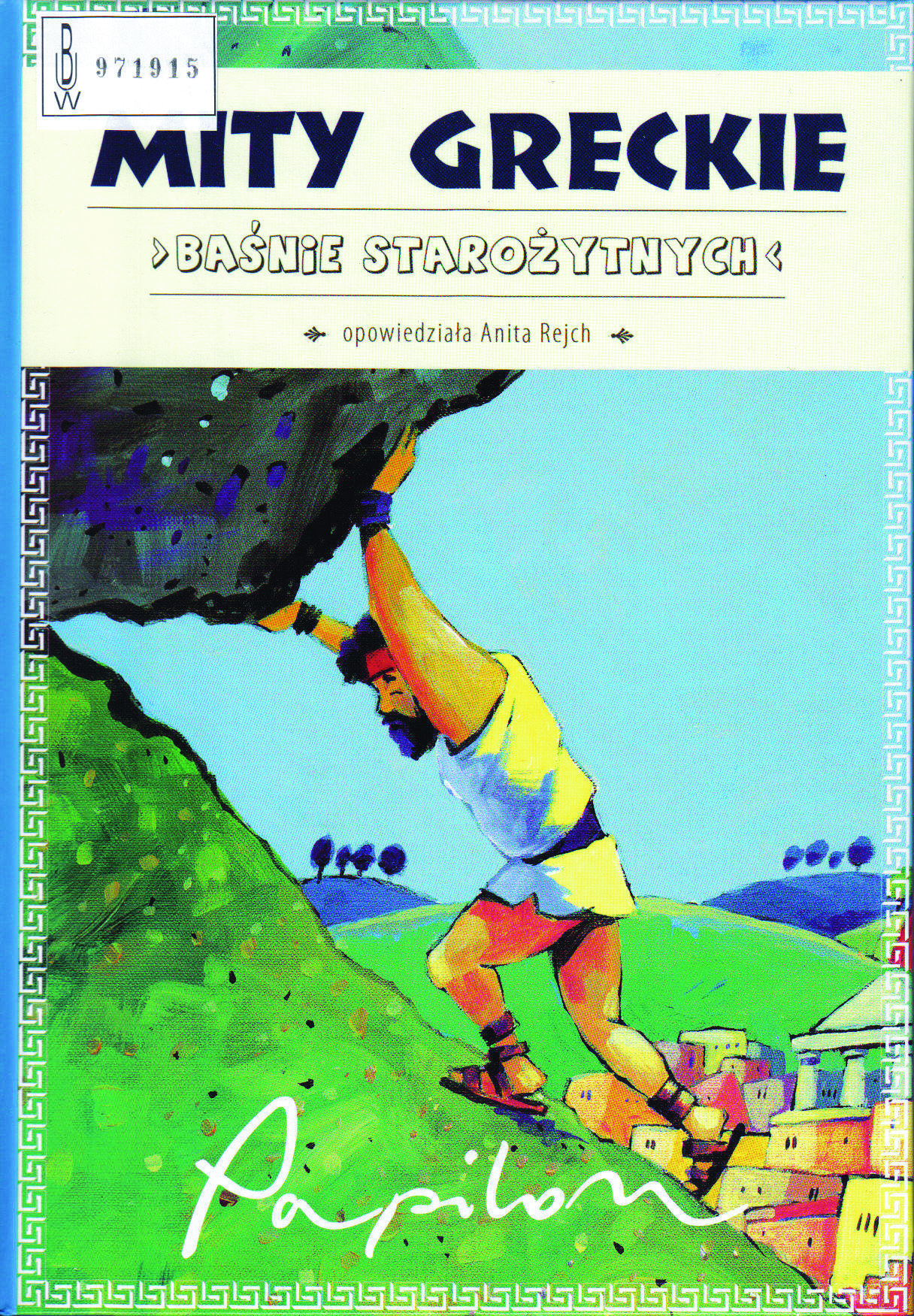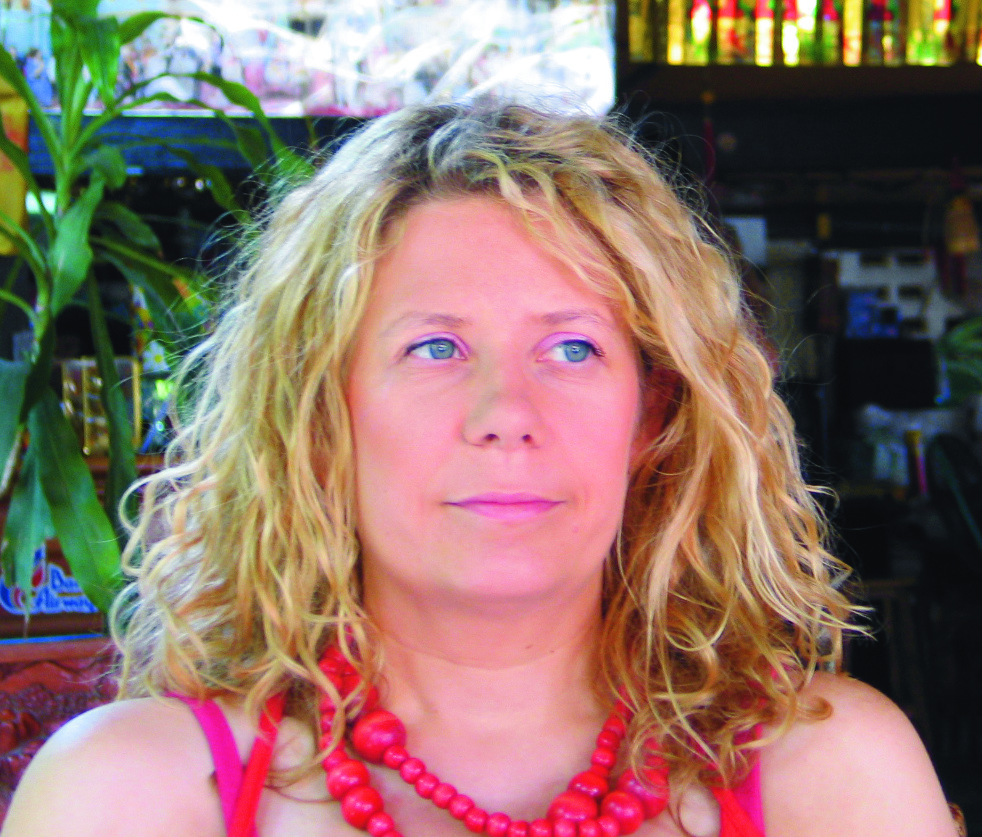Title of the work
Country of the First Edition
Country/countries of popularity
Original Language
First Edition Date
First Edition Details
Anita Rejch, Mity greckie. Baśnie starożytnych. Warszawa: Papilon, 2007, 112 pp.
ISBN
Genre
Anthology of myths*
Target Audience
Children
Cover

Cover design by Robert Rejch. Illustrations by Marcin Piwowarski. Courtesy of the publisher.
Author of the Entry:
Summary: Barbara Krcha, University of Warsaw, b.krcha@student.uw.edu.pl
Analysis: Marta Pszczolińska, University of Warsaw, m.pszczolinska@al.uw.edu.pl
Peer-reviewer of the Entry:
Katarzyna Marciniak, University of Warsaw, kamar@al.uw.edu.pl
Elżbieta Olechowska, University of Warsaw, elzbieta.olechowska@gmail.com

Photograph courtesy of the Author.
Anita Rejch
, b. 1975
(Author)
A philologist and journalist. Worked as an educator; for many years she was the editor of an educational portal Interkl@sa (accessed: June 16, 2021); author of books for children; co-author of educational exercises; editor of books for children and young adults.
Works: Mity greckie. Baśnie starożytnych [Greek Myths. Fairytales of the Ancients], 2007; Baśnie z tysiąca i jednej nocy [Tales of the Thousand and One Night], 2007; Sekretny pamiętnik szkolny [Secret School Diary], 2007; Złote myśli. Mój skarbczyk sekretów [Golden Thoughts. My Treasury of Secrets], 2008; Sekretny dziennik nastolatki. Cztery pory roku [Secret Diary of a Teenage Girl. The Four Seasons], 2012. The author says that she adores children, poetry, biking, travel, and Thailand – the land of smiles. She loves her family, most of all, her two daughters – the elder Idusia and the younger Jagódka.
Sources:
Bio based on the material kindly provided by the Author.
Official website (accessed: June 16, 2021).
Bio prepared by Barbara Krcha, University of Warsaw, b.krcha@student.uw.edu.pl
Summary
Based on: Katarzyna Marciniak, Elżbieta Olechowska, Joanna Kłos, Michał Kucharski (eds.), Polish Literature for Children & Young Adults Inspired by Classical Antiquity: A Catalogue, Faculty of “Artes Liberales”, Warsaw: University of Warsaw, 2013, 444 pp., section by Barbara Krcha, pp. 294–295.
The book is a collection of the most popular Greek myths adapted for children between 10 and 12 years old and written in an accessible language. The author compares mythical events to situations well-known to children from their everyday life allowing them to grasp the sense and wisdom of myths. The stories cover the origin of the world and the birth of the gods, the myth of Prometheus, the three Moirai, or the Fates, the winged twins, Hypnos and Thanatos who are the gods of sleep and death, the beautiful goddess Aphrodite, who emerged from the sea, Hermes, the prankster, Demeter and her daughter Kore, the musician Orpheus and his beloved Eurydice, the crafty Sisyphus, Perseus who killed the Gorgon Medusa, Narcissus in love with his own reflection, the builder Daedalus and his son Icarus, Theseus – the slayer of the Minotaur, and Oedipus who tried in vain to escape his destiny.
Analysis
In fifteen short chapters, this book presents selected Greek myths adapted for children. Each story is dedicated to a god or mythological character. Most of the myths are widely known, while a few are less popular, like, for example, the myths about Moirai or Hypnos and Thanatos. The author omits some myths, such as the basic myth of Heracles, but the hero appears in other stories – Heracles pleads with Zeus to free Prometheus, and becomes a role model for Theseus after they actually meet.
The way of presenting Greek myths includes stylized childish rhymes, contemporary dialogues, descriptions, and comparisons to make the content more familiar. Thus the myth of Narcissus begins with the image of a blooming meadow and a family picnic with homemade delicacies that children could organise with their parents. The retelling of Demeter and Kore's myth includes an image of a mother and a daughter making fruit preserves in the autumn so that Demeter can bake an apple pie or fry apple pancakes to serve as comfort food when she is lonely in the winter.
The selected myths are full of minor details, secondary characters or subplots known from ancient sources, which are often omitted in childrens’ stories as they are considered unnecessary, for example, Aristaios, Autolycus or Talos, son of Perdix. Some of them, however, intentionally or not, are alternate versions of classical stories: the myth of Moria and her revived brother Tylos is presented here as a part of the story of the Moirai; Amaltea, known in antiquity as a nymph or a goat, becomes a hybrid half-nymph-half-goat; Sisyphus imprisons Hades instead of Thanatos; the Minotaur is named as a son of Minos. Some details are softened as they could be too harsh for the child reader, like in the case of Ouranos’ mutilation or the release of Prometheus from his chains (there is no mention of killing the eagle or the sacrifice of Cheiron the Centaur). A similar adaptation was used in the story of the Minotaur, who, after his captivity in the labyrinth, accepts his new place, becomes calm, and arranges a cozy room there. Unfortunately, the very next chapter about Theseus shows this “tame” Minotaur being slaughtered during his sleep.
What seems to be inconsistent in this adaptive effort is its selectivity: some violent events are omitted or glossed over, some remain. The author describes Daedalus’ jealousy of the intellect and skills of his nephew Talos, but then mentions not only the boy’s death but describes the murder in gruesome detail. The murder is shown as premeditated; the uncle distracts the boy with light banter to make him unsuspicious, once the deed is done, Daedalus hides the body in a sac prepared beforehand. While carrying the heavy bloody bag, he engages in a conversation with a passer-by and finally flees to avoid detection. The Theban myth is told in a similar way, including a drastic description of Laius’ cruelty, instead of a short mention of the baby Oedipus, abandoned to avert the prophecy. The detailed scene describes a psychopathic Laius suddenly rushing into the alcove during delivery, snatching the newborn from the crying nurse, taking the infant boy on top of a mountain, piercing his feet with nails, tying him up and finally abandoning him there.
The author also highlights contemporary social problems in her retelling. The best example here is the myth of Theseus, in which the hero is raised as the son of a single mother, left by her partner when he learns of the pregnancy. The only comment about the father’s abandonment of the family is a banal one that such things happen sometimes. An adult Theseus acts in a similar way – he abandons Ariadne and sails away. Again, it is the woman who is more engaged in the relationship. At the end of the myth about Aegeus’ death, Theseus is told that he lost the father he never really knew. Similarly, the myth of Aphrodite highlights a problem of incompatible marriages in which spouses have different interests and life goals but remain together, despite love affairs with other people.


